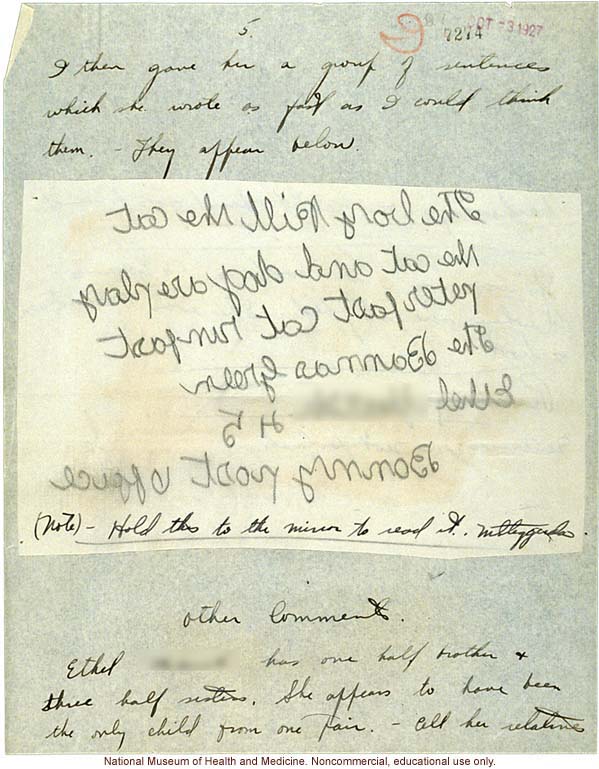My last post focused on fiction: how to write a novel
I would enjoy reading.
There are far more people in the world who have to
write other kinds of documents: letters, proposals, memos, instructions, report
— which may or may not be fictitious.
These writers also need some guidance, at least to
judge from many of the reports I have to read. So here are a few tips on how to
write a report that I will be able to read.
1. Start at the end
Get to the point immediately. No one reads reports for
pleasure. They want to know “what’s in this for me?”
Start with your more important point: what does this
report mean? In other words, the conclusion. State that up front. In fact,
write it down first.
Think of writing your report as taking a road trip. What’s the first thing you do? You enter the destination into MapQuest (or Google Maps, or whatever). You find out exactly where it is and you get directions from where you are now.
Think of writing your report as taking a road trip. What’s the first thing you do? You enter the destination into MapQuest (or Google Maps, or whatever). You find out exactly where it is and you get directions from where you are now.
Your conclusion, which should be the thesis statement of your report, is your
destination. Now, you need to work out how to get there.
2. Get a GRIP
Regular readers will know my copyrighted formula to
writing: Goal, Idea, Reader and Plan.
Goal — Your purpose. Why are you going to your destination? What will you do when you get there? In terms of writing, what result do you want from this report? It could be to change a policy in the workplace, or it could be to inform colleagues about safer working procedures. Whatever it is, have a clear idea about it. If you have trouble clarifying the purpose, answer this question: what do you want the reader(s) to do after they finish reading the report?
Reader — Whom is this report for? Who are they, specifically? What interests them? What motivates them? Why should they care about what you have to say?
Idea — Your main message, your thesis statement, the most important thing you have to say. Sum up your whole report into one grammatically correct sentence. If you can’t do that, you cannot make your point clearly to anyone else.
| Image from Jamie Rubin, science-fiction author http://www.jamierubin.net/2012/08/07/going-paperless-5-tips-for-how-a-paperless-lifestyle-can-better-capture-some-everyday-interactions/ |
Plan — This is your MapQuest/Google directions to the conclusion. A map has two main points: starting and destination. Now, your audience is uninformed, or at least not as aware of all the information you have. Where you want them to be is responding according to your Goal statement.
Typically, you need to present facts, show the links
and relationships among them, and demonstrate to the readers why these are
important. Tell the reader how the facts and links affect their job or life.
For example, if you want to cause change in your organization, you will have to show how the current situation costs more money (or time, which is the same thing) than it has to. You have to demonstrate this is a pressing problem, or imminent threat to safety, employee morale or bottom-line profits. Then you have to demonstrate how your conclusion will solve all those problems.
3. Write backwards
Write the conclusion first. That will put your
destination, your main point, clearly at the top of your mind. And it will show
you how to get there.
Then write the persuasive information that will bring your readers there. Follow your outline. Don’t skip anything. Fill in all the information your readers will need to accept your conclusion and take the action you want them to take.
Then write the persuasive information that will bring your readers there. Follow your outline. Don’t skip anything. Fill in all the information your readers will need to accept your conclusion and take the action you want them to take.
 |
| National Museum of Health and Medicine. Educational and non-commercial use only. |
Write the introduction last. State the problem (if
there is one) and summarize your conclusion.
If you’re going to summarize anything, you have to
have the full statement written out first. It’s far more difficult to say something
succinctly first, then extend it to a full argument.
It’s like that old statement that’s been attributed to
Mark Twain, Samuel Pepys, Oscar Wilde and many more: “Sorry to write you such a
long letter; I didn’t have time to write a short one.”
4. Control quality
Avoid jargon and business terms like “going forward,” “institutional
arrangements,” “at the end of the day” or “outside the box.” These are emptyphrases. Just write what you mean.
Eliminate empty words and phrases that don’t add
information. Replace noun phrases with verbs. Keep your sentences active (see my post on Writers Get Together).
And before you deliver your report to the audience, edit it. Go over it again. Watch out for
clichés and vague thinking, as well as downright mistakes. Was the number
supposed to be 51 or 15 cases of ammunition? Did that shipment arrive on
February 8 or August 2?
5. Proofread it one more time
It can’t hurt, and you may just catch something
egregious. Better yet, have someone else read it over. You can’t proofread your
own stuff.
Follow these guides, and you’ll have a much easier
time writing a document that will have the results that you want.
Questions? Ask in the Comments section below.
Good luck!


GRIP...I'll remember that! I don't write a lot of reports, but I do write a lot of essays and blog posts. The same process would be a perfect jumping off point for creative nonfiction.
ReplyDelete